Improved Huygens’ Principle for Metamaterial
Abstract
1. Introduction
2. Model
3. Full-Wave Simulations
4. Two-Dimensional Case and Experiments
5. Conclusions
Author Contributions
Funding
Data Availability Statement
Conflicts of Interest
References
- Baues, P. Huygens’ principle in inhomogeneous, isotropic media and a general integral equation applicable to optical resonators. Opto-Electronics 1969, 1, 37–44. [Google Scholar] [CrossRef]
- Enders, P. Huygens’ principle and the modelling of propagation. Eur. J. Phys. 1996, 17, 226. [Google Scholar] [CrossRef]
- Bergstein, L.; Zachos, T. A Huygens’ principle for uniaxially anisotropic media. JOSA 1966, 56, 931–937. [Google Scholar] [CrossRef]
- Hansen, T.; Kaiser, G. Generalized Huygens principle with pulsed-beam wavelets. J. Phys. A Math. Theor. 2009, 42, 475403. [Google Scholar] [CrossRef][Green Version]
- Huang, W.; Liu, M.; Xu, Y.; Yin, S.; Zhang, W.; Han, J. Huygens principle for random metamaterial without coupling. J. Opt. Soc. Am. B. 2023, 40, 312–317. [Google Scholar] [CrossRef]
- Bao, Y.; Yu, Y.; Xu, H.; Guo, C.; Li, J.; Sun, S.; Wang, X. Full-colour nanoprint-hologram synchronous metasurface with arbitrary hue-saturation-brightness control. Light Sci. Appl. 2019, 8, 95. [Google Scholar] [CrossRef] [PubMed]
- Fan, Q.; Liu, M.; Zhang, C.; Zhu, W.; Wang, Y.; Lin, P.; Xu, T. Independent amplitude control of arbitrary orthogonal states of polarization via dielectric metasurfaces. Phys. Rev. Lett. 2020, 125, 267402. [Google Scholar] [CrossRef] [PubMed]
- Duan, G.; Schalch, J.; Zhao, X.; Li, A.; Chen, C.; Averitt, R.D.; Zhang, X. A survey of theoretical models for terahertz electromagnetic metamaterial absorbers. Sens. Actuat. A. 2019, 287, 21–28. [Google Scholar] [CrossRef]
- Nguyen, H.V. Generalized coupled-mode approach of metamaterial coupled-line couplers: Coupling theory, phenomenological explanation, and experimental demonstration. IEEE Trans. Microw. Theory Tech. 2007, 55, 1029–1039. [Google Scholar] [CrossRef]
- Elnaggar, S.Y.; Tervo, R.J.; Mattar, S.M. Energy coupled mode theory for electromagnetic resonators. IEEE Trans. Microw. Theory Tech. 2015, 63, 2115–2123. [Google Scholar] [CrossRef]
- Fu, Q.; Zhang, F.; Fan, Y.; Dong, J.; Cai, W.; Zhu, W.; Yang, R. Weak coupling between bright and dark resonators with electrical tunability and analysis based on temporal coupled-mode theory. Appl. Phys. Lett. 2017, 110, 221905. [Google Scholar] [CrossRef]
- Papasimakis, N.; Fedotov, V.A.; Zheludev, N.I.; Prosvirnin, S.L. Metamaterial analog of electromagnetically induced transparency. Phys. Rev. Lett. 2008, 101, 253903. [Google Scholar] [CrossRef] [PubMed]
- Chiam, S.Y.; Singh, R.; Rockstuhl, C.; Lederer, F.; Zhang, W.; Bettiol, A.A. Analogue of electromagnetically induced transparency in a terahertz metamaterial. Rev. B. 2009, 80, 153103. [Google Scholar] [CrossRef]
- Zhang, Y.; Liu, S.; Huang, W.; Dong, E.; Li, H.; Shi, X.; Luo, Z. Plasmon-induced transparency effect in hybrid terahertz metamaterials with active control and multi-dark modes. Phys. B 2022, 31, 068702. [Google Scholar] [CrossRef]
- Huang, W.; Liu, S.; Cheng, Y.; Han, J.; Yin, S.; Zhang, W. Universal coupled theory for metamaterial bound states in the continuum. New J. Phys. 2021, 23, 093017. [Google Scholar] [CrossRef]
- Huang, W.; Liu, S.; Cao, S.; Guo, C.; Yin, S.; Du, X.; Zhang, W. Quantum master equation for coupling mechanism of metamaterial. Results Phys. 2022, 34, 105262. [Google Scholar] [CrossRef]
- Huang, W.; Liu, S.; Zeng, D.; Yang, Q.; Zhang, W.; Yin, S.; Han, J. Coupling-assisted quasi-bound states in the continuum in heterogeneous metasurfaces. IEEE J. Sel. Top. Quantum Electron. 2023, 29, 1–8. [Google Scholar] [CrossRef]
- Kang, M.; Liu, F.; Li, J. Effective spontaneous PT-symmetry breaking in hybridized metamaterials. Rev. A 2013, 87, 053824. [Google Scholar] [CrossRef]
- Alaeian, H.; Dionne, J.A. Parity-time-symmetric plasmonic metamaterials. Phys. Rev. A. 2014, 89, 033829. [Google Scholar] [CrossRef]
- Jin, B.; Tan, W.; Zhang, C.; Wu, J.; Chen, J.; Zhang, S.; Wu, P. High-Performance Terahertz Sensing at Exceptional Points in a Bilayer Structure. Adv. Theory Simul. 2018, 1, 1800070. [Google Scholar] [CrossRef]
- Lawrence, M.; Xu, N.; Zhang, X.; Cong, L.; Han, J.; Zhang, W.; Zhang, S. Manifestation of PT symmetry breaking in polarization space with terahertz metasurfaces. Phys. Rev. Lett. 2014, 113, 093901. [Google Scholar] [CrossRef]
- Kang, M.; Chen, J.; Chong, Y.D. Chiral exceptional points in metasurfaces. Phys. Rev. A. 2016, 94, 033834. [Google Scholar] [CrossRef]
- Hu, J.; Bandyopadhyay, S.; Liu, Y.; Shao, L.Y. A review on metasurface: From principle to smart metadevices. Front. Phys. 2021, 8, 586087. [Google Scholar] [CrossRef]
- Jung, C.; Kim, G.; Jeong, M.; Jang, J.; Dong, Z.; Badloe, T.; Rho, J. Metasurface-driven optically variable devices. Chem. Rev. 2021, 121, 13013–13050. [Google Scholar] [CrossRef] [PubMed]
- Chen, H.T.; Taylor, A.J.; Yu, N. A review of metasurfaces: Physics and applications. Rep. Prog. Phys. 2016, 79, 076401. [Google Scholar] [CrossRef] [PubMed]
- Ni, X.; Kildishev, A.V.; Shalaev, V.M. Metasurface holograms for visible light. Nat. Commun. 2013, 4, 2807. [Google Scholar] [CrossRef]
- Wu, T.; Xu, Q.; Zhang, X.; Xu, Y.; Chen, X.; Feng, X.; Zhang, W. Spin-Decoupled Interference Metasurfaces for Complete Complex-Vectorial-Field Control and Five-Channel Imaging. Adv. Sci. 2022, 9, 2204664. [Google Scholar] [CrossRef]
- Defienne, H.; Ndagano, B.; Lyons, A.; Faccio, D. Polarization entanglement-enabled quantum holography. Nat. Phys. 2021, 17, 591–597. [Google Scholar] [CrossRef]
- DeWolfe, O.; Freedman, D.Z.; Ooguri, H. Holography and defect conformal field theories. Phys. Rev. D 2002, 66, 025009. [Google Scholar] [CrossRef]
- Ozer, A.; Yilmaz, N.; Kocer, H.; Kurt, H. Polarization-insensitive beam splitters using all-dielectric phase gradient metasurfaces at visible wavelengths. Opt. Lett. 2018, 43, 4350–4353. [Google Scholar] [CrossRef]
- Asadchy, V.S.; Albooyeh, M.; Tcvetkova, S.N.; Díaz-Rubio, A.; Ra’di, Y.; Tretyakov, S.A. Perfect control of reflection and refraction using spatially dispersive metasurfaces. Phys. Rev. B. 2016, 94, 075142. [Google Scholar] [CrossRef]
- Zhang, Z.; Zhong, C.; Fan, F.; Liu, G.; Chang, S. Terahertz polarization and chirality sensing for amino acid solution based on chiral metasurface sensor. Sens. Actuat. B 2021, 330, 129315. [Google Scholar] [CrossRef]
- Zhang, R.; You, B.; Wang, S.; Han, K.; Shen, X.; Wang, W. Broadband and switchable terahertz polarization converter based on graphene metasurfaces. Opt. Exp. 2021, 29, 24804–24815. [Google Scholar] [CrossRef]
- Shen, X.; Jun Cui, T. Planar plasmonic metamaterial on a thinfilm with nearly zero thickness. Appl. Phys. Lett. 2013, 102, 211909. [Google Scholar] [CrossRef]
- Huang, Y.; Nakamura, K.; Takida, Y.; Minamide, H.; Hane, K.; Kanamori, Y. Actively tunable THz filter based on an electromagnetically induced transparency analog hybridized with a MEMS metamaterial. Sci. Rep. 2020, 10, 20807. [Google Scholar] [CrossRef]
- Esfandiyari, M.; Lalbakhsh, A.; Jarchi, S.; Ghaffari-Miab, M.; Mahtaj, H.N.; Simorangkir, R.B. Tunable terahertz filter/antenna-sensor using graphene-based metamaterials. Mater. Des. 2022, 220, 110855. [Google Scholar] [CrossRef]
- Alitalo, P.; Tretyakov, S. Electromagnetic cloaking with metamaterials. Mater. Today 2009, 12, 22–29. [Google Scholar] [CrossRef]
- Padilla, W.J.; Basov, D.N.; Smith, D.R. Negative refractive index metamaterials. Mater. Today 2006, 9, 28–35. [Google Scholar] [CrossRef]
- El Yousfi, A.; Lamkaddem, A.; Abdalmalak, K.A.; Segovia-Vargas, D. A Broadband Circularly Polarized Single-Layer Metasurface Antenna Using Characteristic-Mode Analysis. IEEE Trans. Antennas Propag. 2023, 71, 3114–3122. [Google Scholar] [CrossRef]
- Dong, Y.; Itoh, T. Metamaterial-based antennas. Proc. IEEE 2012, 100, 2271–2285. [Google Scholar] [CrossRef]
- Eleftheriades, G.V.; Kim, M.; Ataloglou, V.G.; Dorrah, A.H. Prospects of Huygens’ metasurfaces for antenna applications. Engineering 2022, 11, 21–26. [Google Scholar] [CrossRef]
- Akram, M.R.; He, C.; Zhu, W. Bi-layer metasurface based on Huygens’ principle for high gain antenna applications. Opt. Exp. 2020, 28, 15844–15854. [Google Scholar] [CrossRef] [PubMed]
- El Yousfi, A.; Lamkaddem, A.; Abdalmalak, K.A.; Muñoz, L.G.; Vargas, D.S. Miniaturized circularly polarized single-layer metasurface antenna using characteristic modes. In Proceedings of the 2021 IEEE International Symposium on Antennas and Propagation and USNC-URSI Radio Science Meeting (APS/URSI), Singapore, 4–10 December 2021; IEEE: Piscataway, NJ USA, 2021; pp. 1327–1328. [Google Scholar]
- Ahmadivand, A.; Gerislioglu, B.; Ahuja, R.; Mishra, Y.K. Toroidal metaphotonics and metadevices. Laser Photonics Rev. 2020, 14, 1900326. [Google Scholar] [CrossRef]

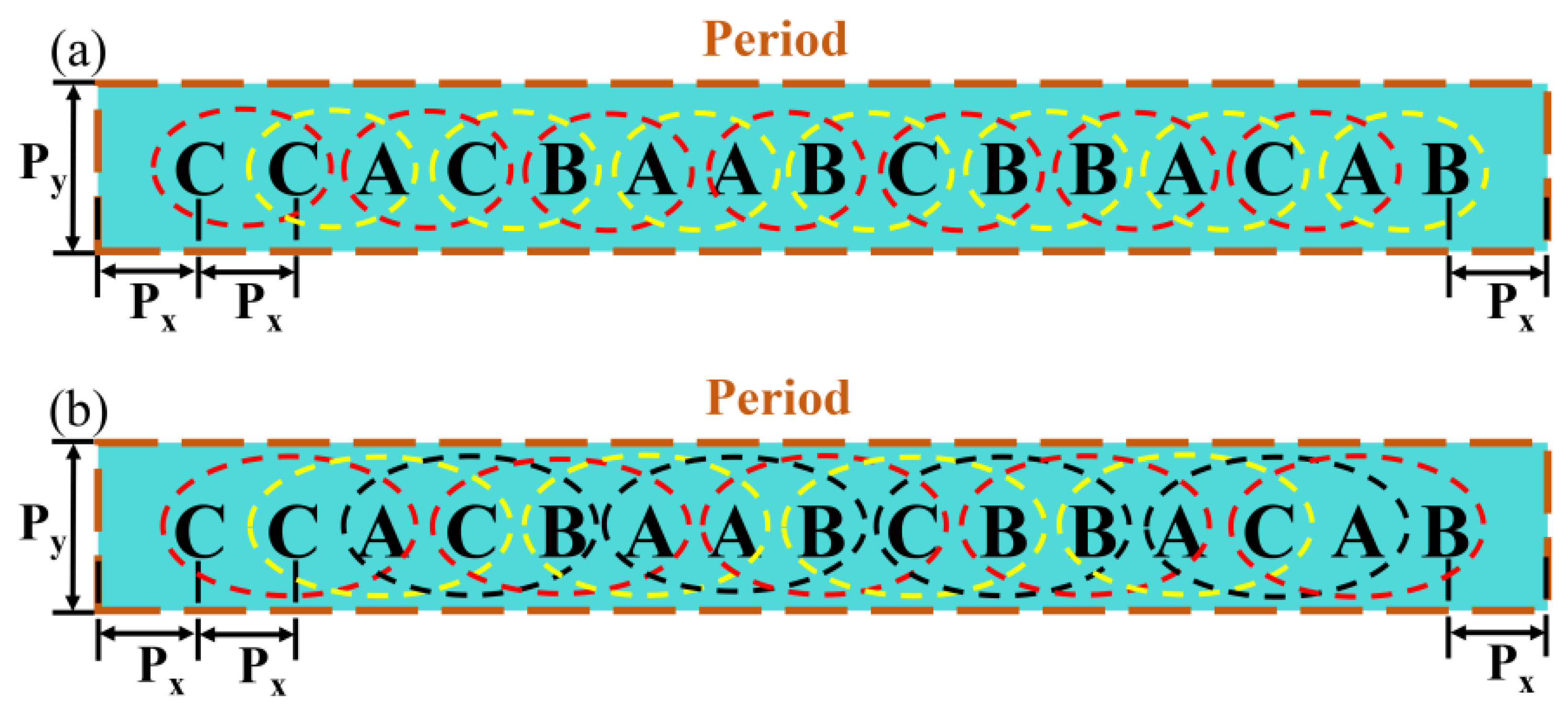
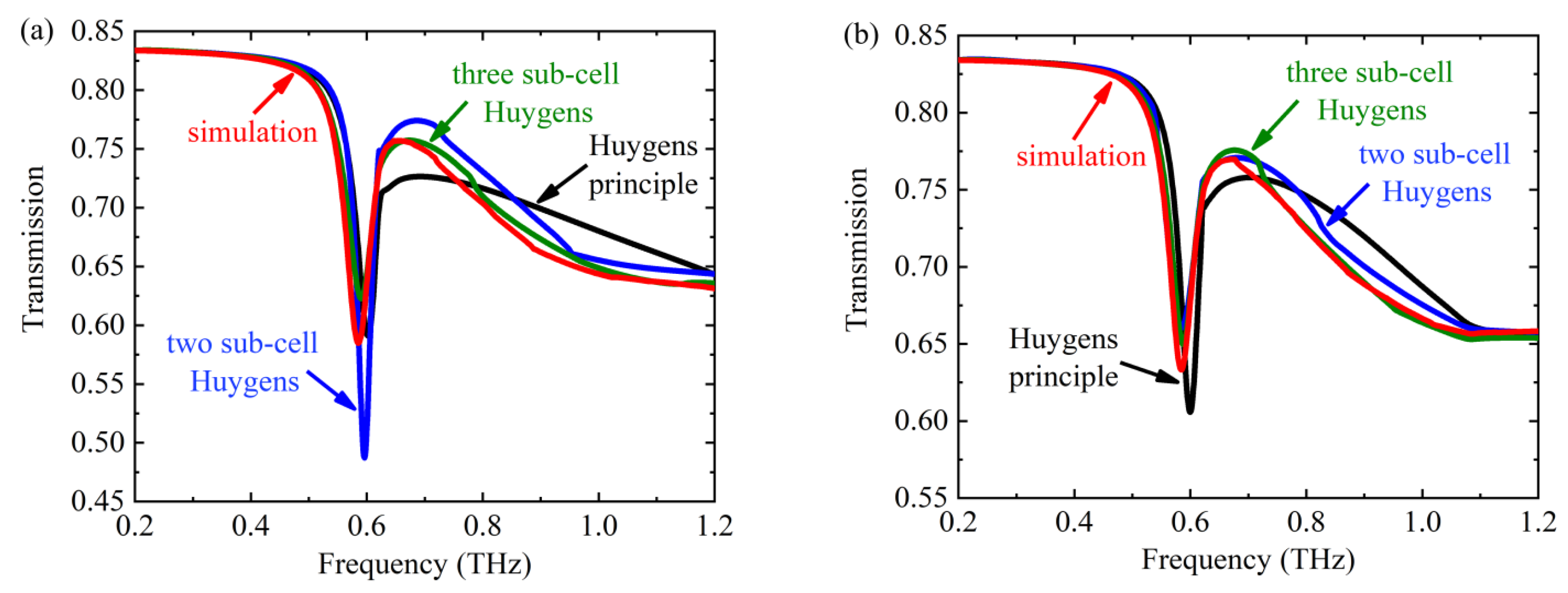
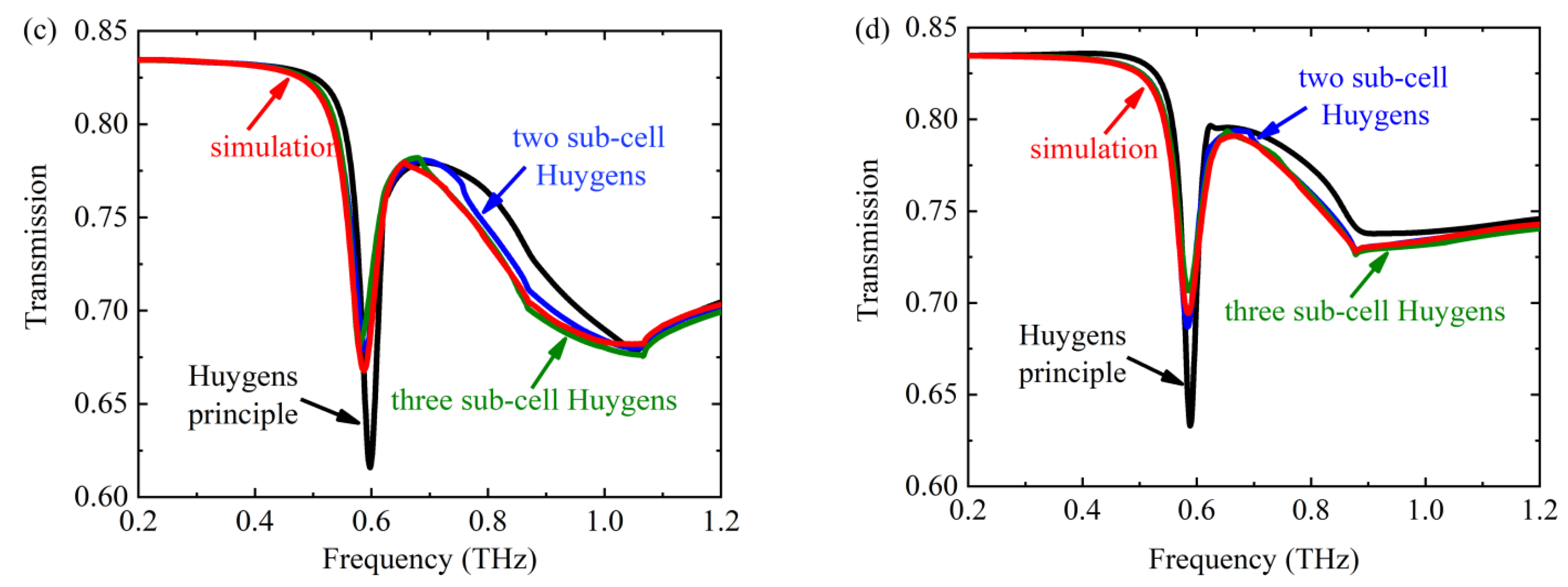
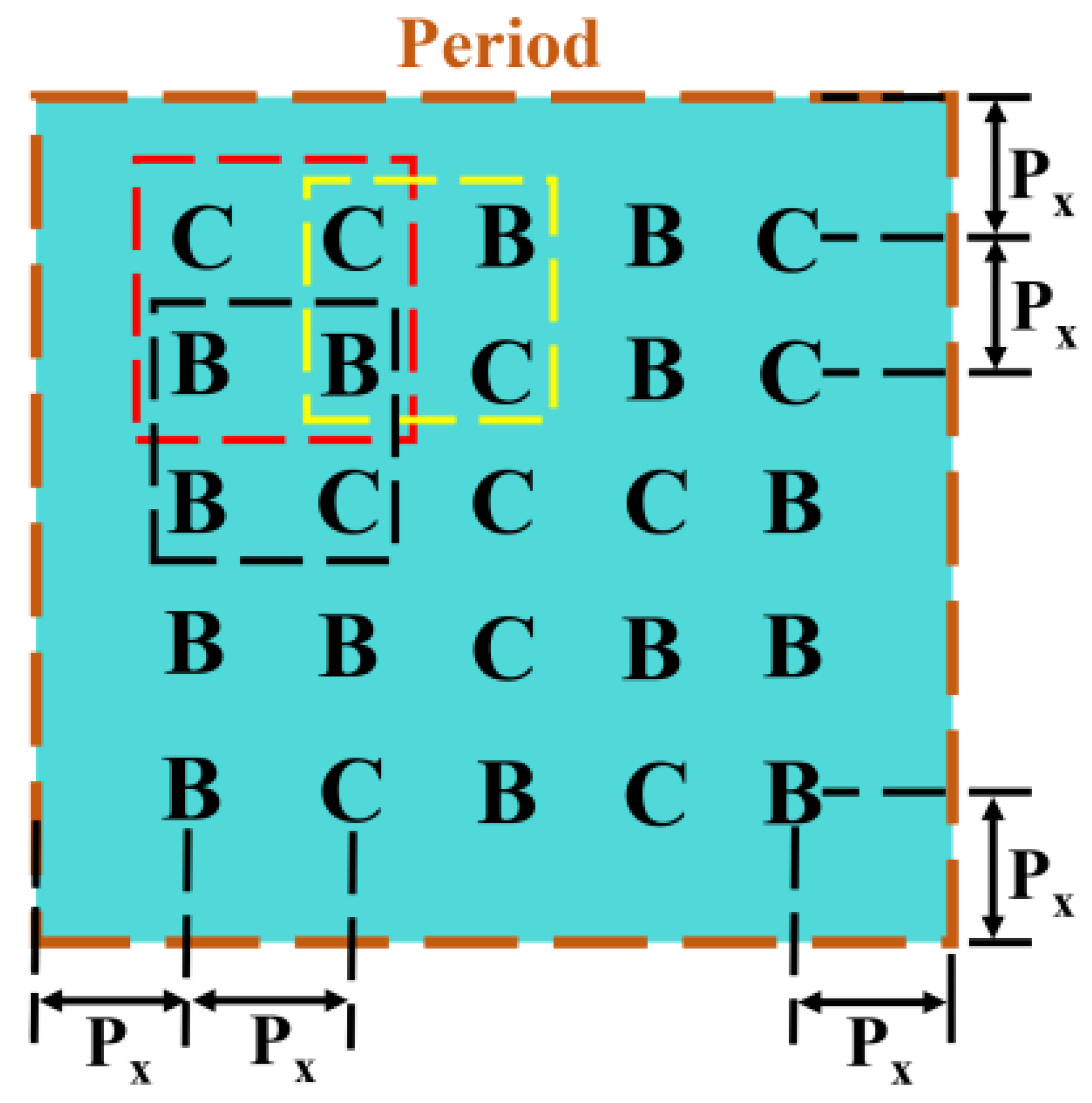

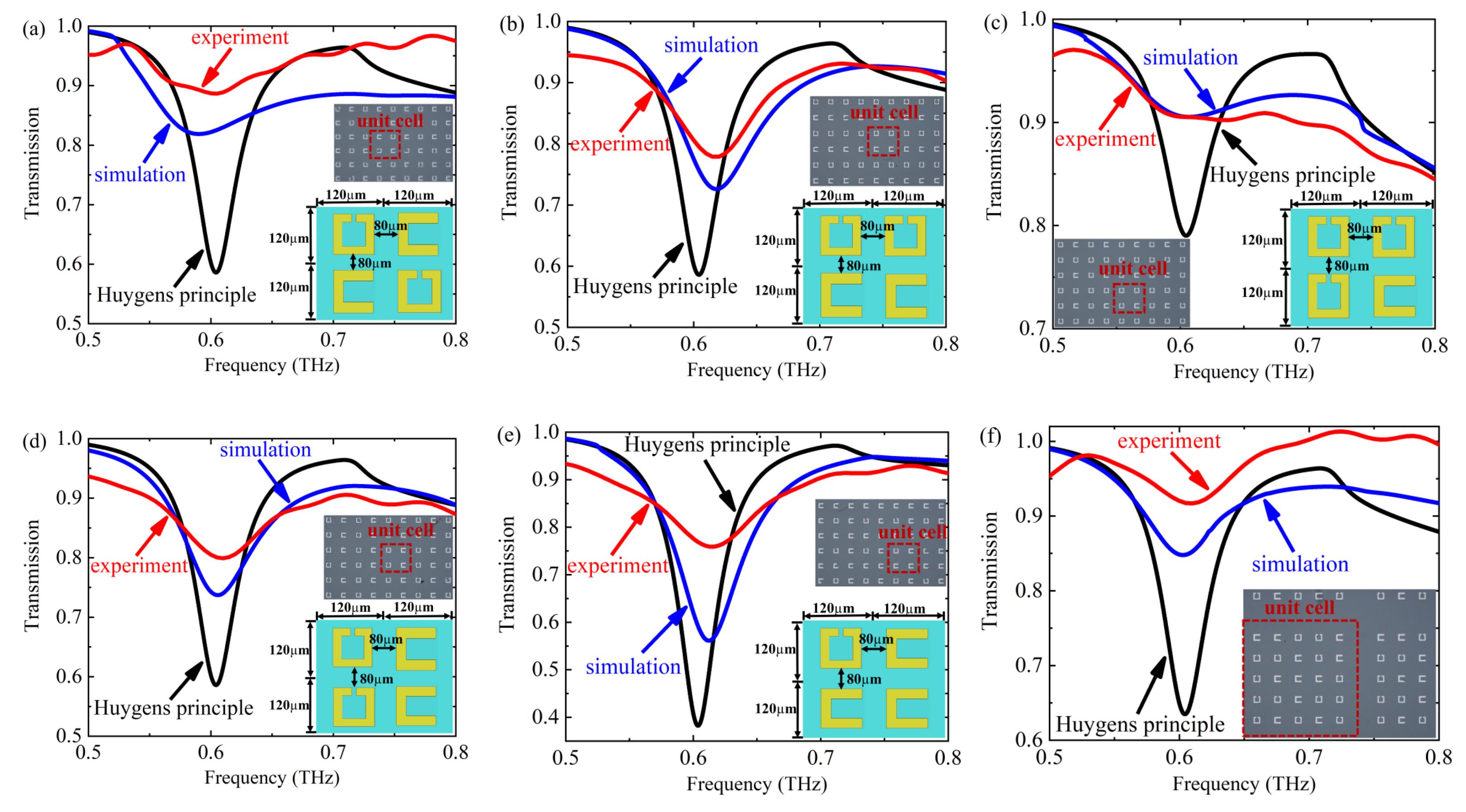
Disclaimer/Publisher’s Note: The statements, opinions and data contained in all publications are solely those of the individual author(s) and contributor(s) and not of MDPI and/or the editor(s). MDPI and/or the editor(s) disclaim responsibility for any injury to people or property resulting from any ideas, methods, instructions or products referred to in the content. |
© 2023 by the authors. Licensee MDPI, Basel, Switzerland. This article is an open access article distributed under the terms and conditions of the Creative Commons Attribution (CC BY) license (https://creativecommons.org/licenses/by/4.0/).
Share and Cite
Huang, W.; Liu, D.; Qu, X.; Yin, S.; Ye, S.; Zhang, W. Improved Huygens’ Principle for Metamaterial. Crystals 2023, 13, 1619. https://doi.org/10.3390/cryst13121619
Huang W, Liu D, Qu X, Yin S, Ye S, Zhang W. Improved Huygens’ Principle for Metamaterial. Crystals. 2023; 13(12):1619. https://doi.org/10.3390/cryst13121619
Chicago/Turabian StyleHuang, Wei, Dan Liu, Xiaowei Qu, Shan Yin, Song Ye, and Wentao Zhang. 2023. "Improved Huygens’ Principle for Metamaterial" Crystals 13, no. 12: 1619. https://doi.org/10.3390/cryst13121619
APA StyleHuang, W., Liu, D., Qu, X., Yin, S., Ye, S., & Zhang, W. (2023). Improved Huygens’ Principle for Metamaterial. Crystals, 13(12), 1619. https://doi.org/10.3390/cryst13121619








